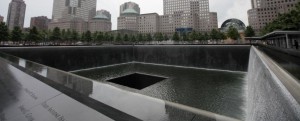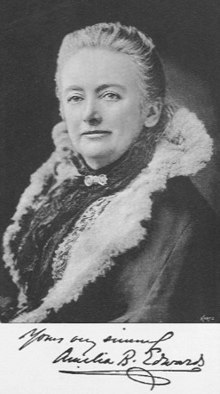
Over the past few weeks, I have had two occasions to visit the 9/11 Memorial Plaza. The first was at the invitation of City Wonders Tours, a tour company seeking to promote its tour.
The second was following the memorial service to Alexander Hamilton by the Alexander Hamilton Awareness Society at nearby Trinity Church, the final stop of the City Wonders tour. The following comments are based on these visits.
The first observation is that the site is a work in progress. The Plaza itself is complete but the surroundings are not. The very subway stop where I disembarked is part of a major construction project which will link the various subway lines in Lower Manhattan through an underground facility with a spectacular aboveground “ribcage” construction. The very act of visiting the site will change as the 21st-century facility is completed.
The second observation is the opening of the space. When I first visited we had to navigate our way through a security and construction labyrinth to reach the Plaza. One needed to reserve time or have a guided tour to enter. All that quickly changed. There are still construction walls up and the area is by no means completed, but access to the Plaza is now unrestricted.
 The third observation is strictly a New York construction one. There is a story to be told about the construction of the 9/11 site. When our City Wonders tour began, the guide discussed the history of how the World Trade Towers were built in the first place.
The third observation is strictly a New York construction one. There is a story to be told about the construction of the 9/11 site. When our City Wonders tour began, the guide discussed the history of how the World Trade Towers were built in the first place.
Note: The guide had a tablet which he used to bring up pictures relating to his discourse on the buildings. This is an excellent idea. In the future, if not already, I expect guides will direct participants to a website which they could access on the device of their choosing.
The story of the construction is one of power politics, real estate, and money involving elected officials, bureaucrats, real estate magnates, and the Rockefellers. One goal was to “save” Lower Manhattan from the exodus to midtown of various financial institutions and other organizations. For municipalities with at most one downtown, it is important to remember in New York, there are two. David Rockefeller, as Mr. Chase Bank with connections to the Governor, sought to stem the leakage. Ironically, now post-9/11, Lower Manhattan is thriving. It has become a bustling business community that doesn’t turn dark at night because thousands of new people now live there bringing with them all the requirements of any lived-in community.
This being said, it is important to note as previously discussed that the World Trade Towers were unloved buildings. Despite the remaking of King Kong, they did not replace the Empire State Building in the hearts and minds of Americans. Sleepless in Seattle was filmed prior to 9/11 and it only could have been a the true high place in the American cosmos where the sacred marriage is between John and Jane Doe, not the king and a goddess/priestess. (See previous posts on the role of the high place at the cosmic center in human society.)
The contrast with another Rockefeller construction project is remarkable. Rockefeller Center in midtown, the very area north of Grand Central Station to which businesses were fleeing, has been hailed as an architectural wonder. With its famed lighting of the Christmas tree and its ice-skating rink seen in numerous movies, it has gained a warm spot in the American psyche. All that seem to have been abandoned in the building of the World Trade Towers. Regrettably, the same may be said for 9/11 Memorial Plaza.
New York builders are notorious for obtaining the right to exceed the permitted zoning height in exchange for amenities such as a plaza. That is what the 9/11 Memorial Plaza looks like. It is as if one or two builders in return for building higher buildings built two plazas combined into one gigantic one. As is often the case withe these amenities, the result is sterile and lifeless. The 9/11 Memorial Plaza is aesthetically pure with clean simple lines devoid of any story. If you didn’t know it was dedicated to 9/11 you wouldn’t know it from looking at it. If you did notice that there were names along the walls surrounding the huge sunken pools, you would probably conclude that they were of the donors to building the Plaza. You would scarcely know that their donation was their lives and the site had become of the sacred sites in the American Civil Religion. It does not engage the visitors.
The Memorial Plaza is bereft of anything that might indicate something truly momentous happened there. As Michael Kimmelman wrote in the New York Times:
“The place doesn’t feel like New York. It feels like a swath of the National Mall plunked in downtown Manhattan: formal, gigantic, impersonal, flat, built to awe, something for the tourists.”
Unfortunately, it doesn’t awe and is not tourist-friendly. Think of any image you have of 9/11 and you won’t find it at the Memorial Plaza. Whether it was the raising of the flag (which seems to have disappeared and to have been replaced a different size one) by the three white male firefighters (a source of contention in the politically correct present), our President standing tall, the walls with flowers by every fire and police station, the huge mounds of debris, the steel-girder Cross, or whatever you remember and you will find no trace of it at the Memorial Plaza. One needs to go to the relief carved into the wall of a nearby fire station to see anything that tells a story…or go into the subterranean 9/11 Memorial Museum.
The museum itself, which is not the subject of the post, gives no exterior sign of being dedicated to 9/11. It is a nondescript structure plunked down in the corner of the plaza. It lacks the grandeur of the entrances to the Metropolitan Museum of Art, the American Museum of Natural History, or the New York Public Library or the distinctiveness of the Guggenheim. From the exterior it is just a building that people line up to enter as one does at a movie theater. The descent occurs inside the museum leaving the exterior experience devoid of emotion with no engagement of the visitor standing on the Plaza.
 The Memorial Plaza doesn’t welcome life; perhaps that was a deliberate decision. It’s not the Vietnam Memorial which is a place of strong emotional expression. It doesn’t even match the sterile antiseptic plazas that real estate magnates usually build as amenities. At least in those places especially at lunch time, people seek to reclaim the void through vendors, food, and noise, all characteristics absent from the Memorial Plaza. It’s not a place that was designed for people.
The Memorial Plaza doesn’t welcome life; perhaps that was a deliberate decision. It’s not the Vietnam Memorial which is a place of strong emotional expression. It doesn’t even match the sterile antiseptic plazas that real estate magnates usually build as amenities. At least in those places especially at lunch time, people seek to reclaim the void through vendors, food, and noise, all characteristics absent from the Memorial Plaza. It’s not a place that was designed for people.
Note: There are no public restrooms. Two favored locations for tourists walking lower Manhattan for hours are St. Paul’s Chapel and Trinity Church. This led to them being dubbed “The Ministry of the Bathroom” by the New York Times. The paper quotes the City Wonders Tours’ guide reminding the tourists over and over again to use these bathrooms or suffer the consequences. Trinity Church uses about 2.2 million feet of toilet paper annually while St. Paul’s Chapel uses over 1 million. Rest stops are an important part of tourism.
Note: Replacing toilet paper was mentioned in a session at the MANY conference for executive directors of museums as a task for some of them.
This makes it all the more necessary to have a guide. At least a human guide can tell a story. The lone pear tree amidst all the oaks at the Plaza has a story to tell about how it survived 9/11 and was relocated twice. Our City Wonder Tours guide talked about this tree which did survive and the off-duty fireman who hustled back to work and did not.
Note: Our guide distributed headsets which permitted us to wander about while he talked and yet stay in touch as the group moved around, another excellent idea.
Perhaps the intention was to design a sterile aesthetically pure plaza of clean lines devoid of any signs of life, hope, or expression of the resiliency in overcoming Osama’s assault on humanity. This paean to Plato’s triumph of the spirit over the body would work better if we humans didn’t have bodies and the sense of touch wasn’t important. Perhaps that is the story the 9/11 Museum is designed to tell. Still one wonders if this is the best that can be done to honor those who paid with their lives to now tell the story that we have not been defeated, we have not been destroyed, we have not gone quietly into the night. As we think of how people have remembered their loved ones throughout human history, from those who died a natural death to those who died unexpectedly from circumstances outside their control, to those who voluntarily put themselves in harms way for something larger than themselves, perhaps there are things we can do to make the 9/11 Memorial Plaza a living testament and ongoing story that honors the dead and remembers the events of that day for the generations to come.
Photos courtesy the 9/11 Memorial Museum; middle photo by Joe-Woolhead.






Excellent article about the 9/11 and the memorial. Even though it’s been over 13 years since that tragic, horrible day, it feels like only yesterday. But you do a great job of capturing that emotion, and your experience. Thanks!